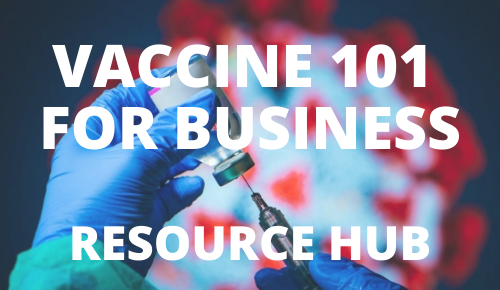THE DO’S AND DON’TS OF BRAINSTORMING
Are you reaping the full benefits of brainstorming? With the right approach, you can build a culture of innovation around this collaborative practice.
During an age when we can feel so disconnected, collaboration can help you reconnect with your team, revive your creative confidence, and reposition your efforts onwards and upwards.
Here are a few do’s and dont’s for deeply effective brainstorming.
Don’t aim for perfection. You’re not going to leave a brainstorming session with campaign-ready copy or a buttoned-down marketing plan. In brainstorming, you’re just looking for ideas. Bullet points or rough sketches will do. If your idea is out of your comfort zone, underdeveloped, or unsophisticated—so what? Share it anyway.
Today’s society expects perfection. And too often, the learning process is hidden behind closed doors. The idea that fumbles and falls are something to be ashamed of prevents us from openly sharing our thoughts in case they aren’t “correct” or “popular.” If you can build a culture that welcomes constructive thinking, you’ll invite an unstoppable stream of new ideas. These ideas may be far from polished, but at least they’ll be out in the open where they can actually be worked with.

“If you can build a culture that rejects the fear of failure, that embraces ideas of all kinds, people won’t wait for an idea to be polished to perfection before sharing it.
Instead, they’ll share as soon as it’s discovered, when it’s still in its roughest form and able to be collaboratively built on.” – Kyle Romaniuk, CEO, Vantage Studios
Brainstorming is meant to pull you out of your head. Voicing your opinions, or talking someone through an idea, could help you recognize holes in your plan or new ideas that were previously hidden in your blind spot. Your ideas can be built on—and that’s what we’re looking for here: building blocks, not the Taj Mahal.
Do have a goal for each brainstorm. Brainstorming isn’t an annual event. Make brainstorming a regular part of your creative process, and plan a separate session around each project you have on your plate. The Vantage team has created customizable VantagePoint™ workshop tools that can be used to align your team, build buy-in, inspire new ideas, and validate existing ones. Whether you’re hashing out a plan of action, prioritizing your options, or launching a new revenue stream, it pays to collaborate.
Before you dive into your brainstorming exercises, define the problem or opportunity you are coming together to tackle and note what the next step in the project will be.
Knowing what you’re going to do with the ideas you cook up will help you make sure they’re as detailed as they need to be to support your next task.
Make sure to follow through and update your team on the results their ideas lead to. When you see your ideas at work, you can understand the purpose of your efforts. This feeling of achievement leads to more motivated work and a happier team.
Don’t rush into it. Don’t just squeeze a brainstorming session in whenever you notice a free space across your company’s collective calendar. This will only have your team feeling pressed for time, still thinking about their last meeting, worrying about their next task, or pining for lunch or a bathroom break. Not fair.
Avoid gathering at 9 a.m. sharp, and definitely don’t leave it for 4 p.m. Ask your team members what time of day they feel most inspired. Cast aside any nocturnal votes and calculate a time that lets your team show up feeling most inspired; a time that lets your team show up feeling energized, focused, and prepared to do their best work.
A good brainstorming session takes time, including a solid chunk of prep time. Decide on session activities in advance, and gather the tools and resources you’ll need to facilitate them. Devote adequate time to your brainstorming: 45-60 minutes for a single topic is ideal. If you plan to work past the one-hour mark, make sure to change up your activities frequently and provide breaks so all brainstormers can stretch or get a snack.
This should be fun, not tedious. If scheduling is an issue, you can always disperse your session over several days to ensure you have all the right people in the room (or Zoom), so no ideas are left out.
Do document everything. Yes, everything! We recommend exercises that require you to document your ideas using a mix of words and sketches. These pictures don’t need to be works of art; we’re just looking for simple visuals. When you think visually, you can express new ideas that you might not have the right words for. This will help you uncover new solutions and express your ideas more clearly.
VantagePoint™ Workshops always start with a drawing exercise. It goes like this: you break your team into groups of two and ask each member to draw a portrait of their partner. You will hear some nervous laughter from the non-artists in your group. This nervousness will only heighten when you tell them they only have 2 minutes to complete their drawing.
When children are asked to do this same activity, there’s no nervous laughter. The kids are excited to do this activity and confident in their ability to draw their partner. This warm-up helps get your team in the frame of mind to proudly share their most bizarre ideas, as kids so often do. We do this activity first because gaining the confidence to contribute is the workshop’s most difficult and essential task.
At the end of your brainstorming session, save all written ideas in a digital document or spreadsheet, and upload pictures of any doodled ideas to your drive.
Don’t play devil’s advocate. Brainstorming is an exercise in empathy. Your role in your company, and your own life experiences, shape your understanding of your customer and determine the challenges, solutions, and opportunities you’re able to see. Someone with different life experiences—a different vantage point—will perceive your customer in a totally different way.
Understanding your customer from multiple perspectives will lead to inspired, innovative, and overall more successful work. At the end of the day, every change your brand makes should be to satisfy your customers’ evolving needs. If you can’t keep up with your customers’ needs, you’ll be seen as unreliable and outdated—and your audience will drop you for a more innovative or convenient competitor.
Build on ideas with the word “and” instead of “but.” This validates your teammates’ perspectives and helps build momentum. Even lightly insinuating (with words or body language) that an idea is wrong or won’t work will extinguish the creative fire you’re trying to spark. A “yes, and” mindset creates more chances for success and helps foster an open culture of continual innovation.
Do diversify your collaboration. Depending on what your goal for the session is, you’ll want to involve members from different areas of your company. Consider involving your executives, frontline staff, producers, loyal customers, lost customers, and even your accountant. What do they know about your audience? How are they involved in fulfilling your company’s mission? What opportunities for growth are obvious to them?
Engaging a diverse team will help you discover new vantage points, inspire empathetic innovation and encourage continual, company-wide development.
Shift your VantagePoint™. VantagePoint™ Workshops are designed to inspire group brainstorms and ignite a culture of innovation. Our workshopping tools inspire empathetic thinking, teach you how to embrace new perspectives, and uncover innovative ideas that you can build on. Never Stop Building.
Download our workshopping tools at Vantagestudios.ca/the-tools




